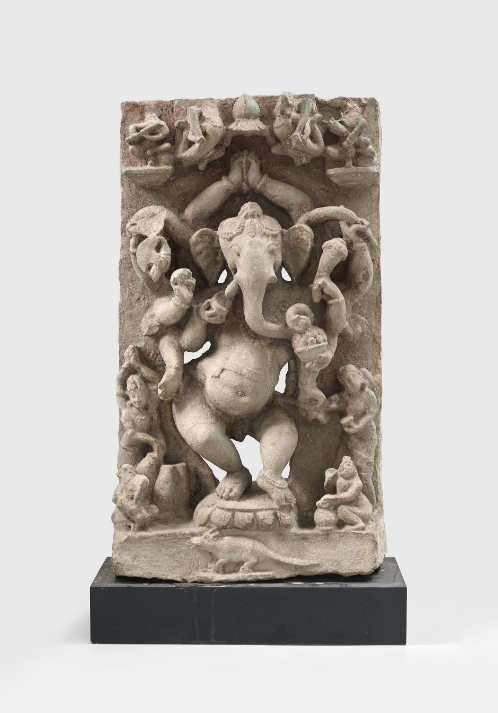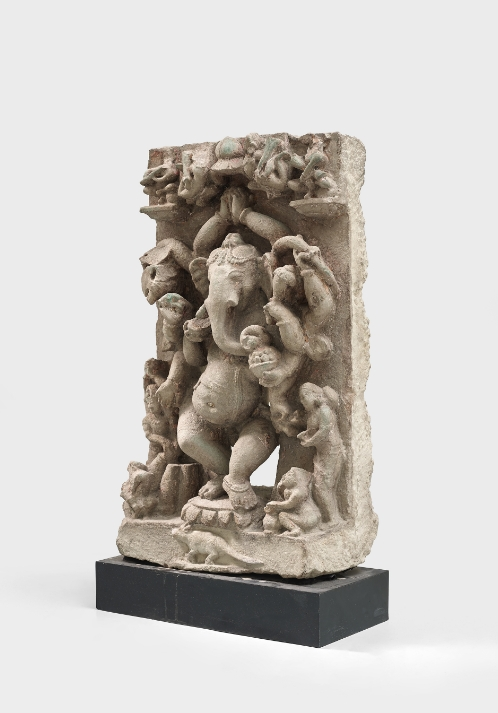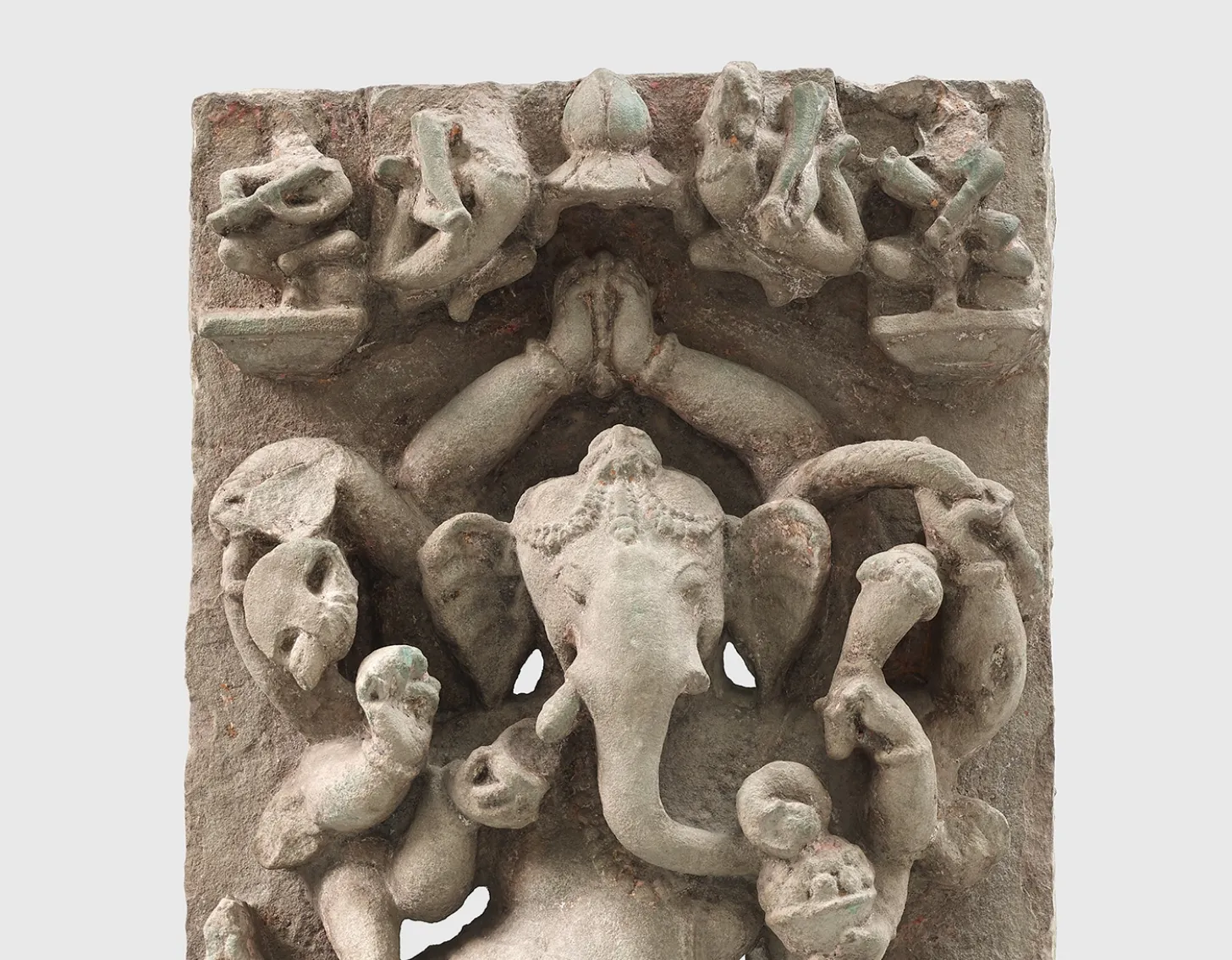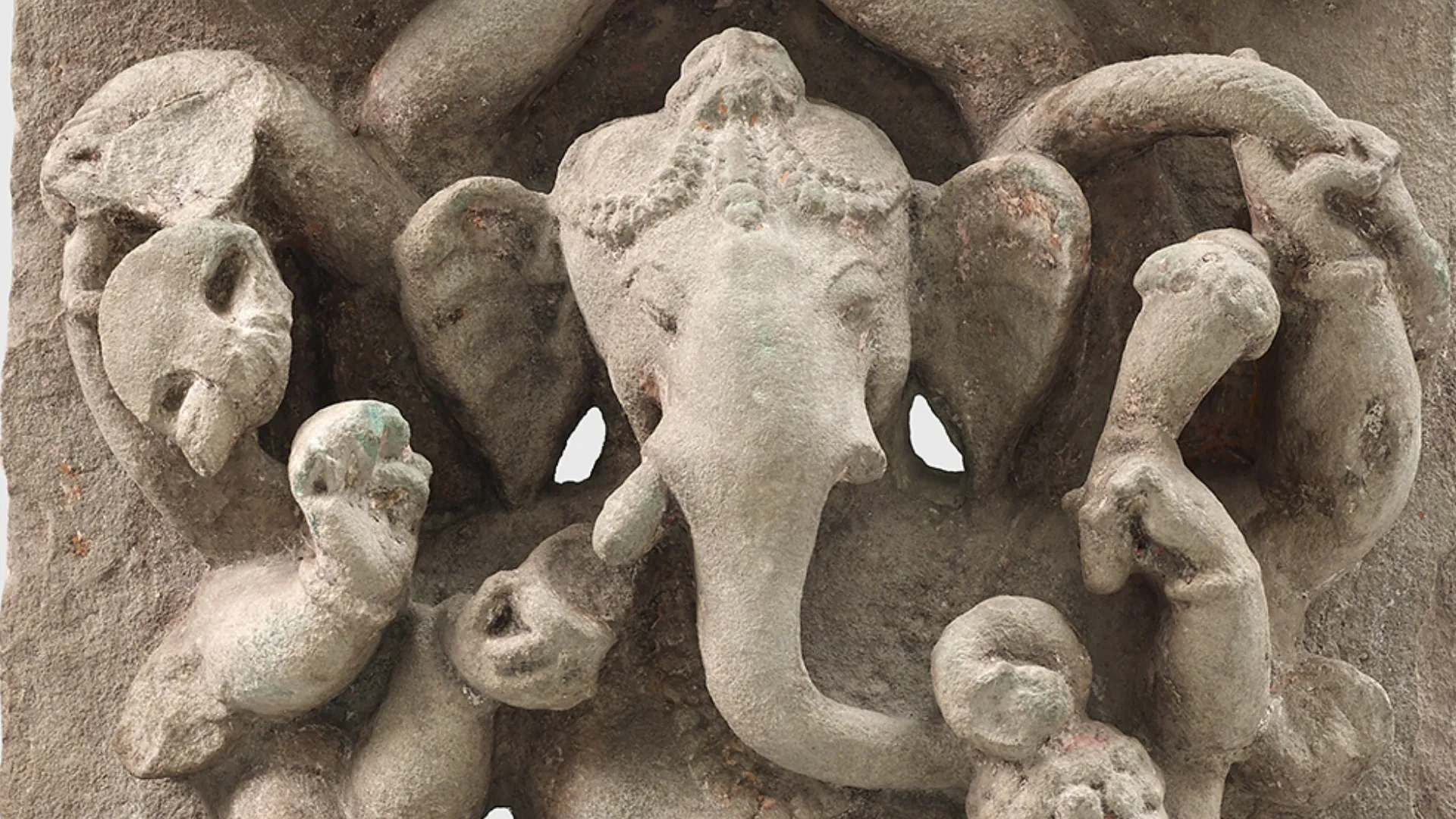Beloved by Hindus, Jains and Buddhists alike, the elephant-headed god Ganesha both creates and clears obstacles. He thus must be invoked at the beginning of all undertakings. The comical, improbable vision of Ganesha dancing while snacking on a bowl of sweets is the subject of an early medieval stone sculpture in the collection (cat. no. 8).
Ponderous weight is placed on the right foot and hip as Ganesha sways to the right. He turns his left foot out, resting delicately on the toes. Ten arms are rhapsodically poised around the torso, holding attributes and weapons; two additional arms (one on either side) are now lost. Six ecstatic musicians inspire this motion, four below and two, flanking the garland-bearing vidyadharas, above. Crouching on the pedestal beneath is a rat, Ganesha’s humble vehicle, adding to scene’s delightful humor.


Tales of the origins and appearance of Ganesha vary, but most describe him as having been created a boy by his mother Parvati from the detritus of her bath. Once manifest, she placed him as sentry to her bath chamber. Shortly thereafter, Parvati’s husband Shiva appeared and demanded entry. When Ganesha refused the stranger’s request, Shiva removed his head. Parvati insisted Shiva restore Ganesha’s head immediately. The first available head was that of an elephant, which was expediently placed atop the young man’s body, thus forming the unique appearance of this beloved deity.
A smaller work of approximately the same period is now in the Virginia Museum of Fine Arts.

